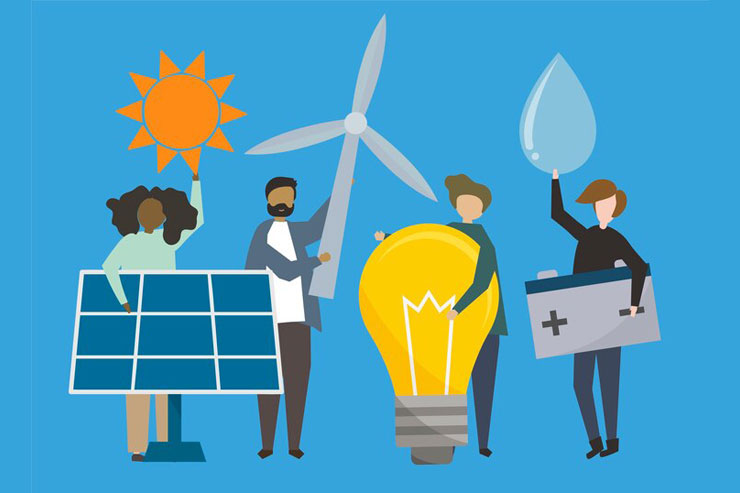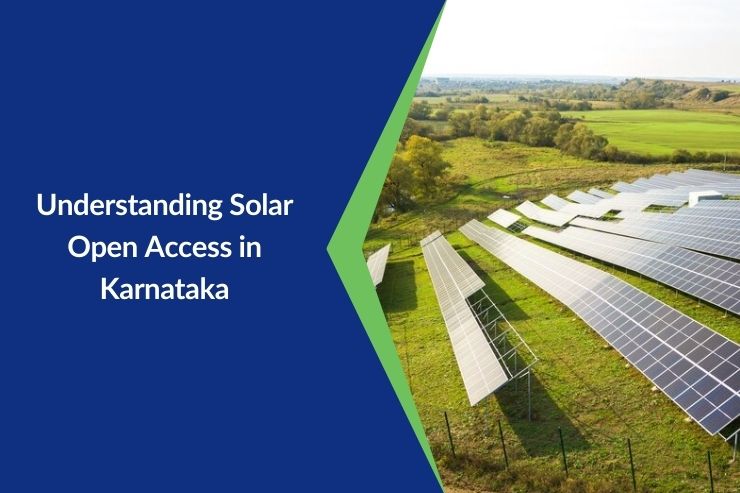What is Renewable Energy Systems
Renewable energy systems are technologies and methods used to generate energy from renewable resources—those that are naturally replenished and sustainable over time. These systems harness natural processes such as sunlight, wind, water flow, and geothermal heat to produce electricity or other forms of energy.
Introduction to Renewable Energy’s Impact on Electric Grids
The global shift towards energy is gaining momentum as people worldwide recognise the
constant need to address climate change. Wind and solar power are playing a role in reducing greenhouse gas emissions and revolutionising our energy infrastructure for the better. This transition is reshaping how we generate, distribute and consume electricity presenting opportunities for advancement amidst challenges.
In this article, we will talk about the increasing significance of energy and its impact on grids. These transformations are taking us towards a sustainable tomorrow. With the escalating impacts of climate change becoming more evident, there is a push towards energy as a cleaner substitute to traditional fossil fuels. The key role of energy in mitigating damage and enhancing energy security is garnering widespread recognition across the globe.
Challenges Faced by Traditional Electric Grids
The traditional electric grids, predominantly powered by fossil fuels, are increasingly viewed as unsustainable. This recognition has started the exploration and adoption of renewable energy sources, which promise to get away with some of the inherent problems of traditional energy systems.
- Environmental Impact: Traditional grids, reliant on fossil fuels, significantly contribute to carbon emissions and environmental degradation.
- Resource Limitation: The finite nature of fossil fuels creates a pressing need for sustainable alternatives like renewable energy systems.
The Promise of Renewable Energy Systems
Renewable energy systems are redefining the future of power generation and distribution. This shift is particularly seen in regions like India, where rapid advancements in renewable technology are reshaping energy strategies to be more sustainable and less centralised.
Renewable sources, such as solar and wind, offer cleaner energy production with significantly lower greenhouse gas emissions. The move towards renewable energy in India and globally promotes a decentralised grid structure, enhancing energy accessibility and reliability.
Key Transformations in Electric Grids
The integration of renewable energy into electric grids is revolutionising the energy landscape. This transformation, crucial for a sustainable future, involves overcoming significant technical and logistical challenges. The intermittent nature of sources like wind renewable energy requires advanced grid management and storage solutions. Adapting existing infrastructures to accommodate diverse types of renewable energy involves substantial changes in grid operation and design.
1. Smart Grid Technologies
The deployment of smart grid technologies marks a significant leap forward in adapting electric grids to the needs of the 21st century. These systems enhance the way grids respond to the complexities introduced by renewable energy resources, facilitating smoother integration and better management of energy flows. This technological evolution is critical in maintaining reliability and efficiency as the share of renewable energy in our power systems grows.
Smart grids utilise real-time data and automation to integrate and manage fluctuating renewable energy inputs effectively. These technologies ensure grid stability and efficiency, crucial as renewable penetration increases.
2. Grid Modernization Initiatives
Modernising the electric grid is very important to harness the full potential of renewable energy. These comprehensive efforts involve upgrading physical infrastructure and revising policies to support renewable integration. This dual approach makes sure that the electric grids are capable of handling increased renewable loads and are aligned with national and international sustainability goals.
Global efforts to upgrade electrical grids are essential to handle the increased load and variability of renewable sources. Legislative support is critical to encourage the integration and expansion of renewable energy systems.
Case Studies of Renewable Energy Grid Transformation
1. Renewable Energy Success Stories
Germany’s Energiewende commitment to transition away from nuclear and fossil fuels has significantly increased its renewable energy capacity. This strategy has necessitated advancements in grid management and storage solutions to stabilise supply.
2. India’s Renewable Energy Integration
India’s aggressive push to include renewables like solar and wind has transformed its energy landscape, setting a precedent for other nations.
3. Vietnam Renewable Energy Expansion
Significant investments in renewable infrastructure have positioned Vietnam as a leader in Southeast Asia’s renewable scene.
Future Outlook and Challenges
As global reliance on renewable energy deepens, the transformation of electric grids becomes a necessity. This shift towards greener energy sources is accompanied by the continuous evolution of technologies designed to optimise these transitions.
Innovations such as advanced energy storage, smart grid solutions, and enhanced regulatory frameworks are shaping the future of electric utilities. However, these advancements bring their own set of challenges. Ensuring the reliability and efficiency of grids amid increasing renewable penetration remains a complex issue.
Additionally, integrating these new technologies while maintaining affordability and accessibility poses significant hurdles. Addressing these challenges requires coordinated efforts between technological innovators, policymakers, and stakeholders across the energy sector. The journey is complex but essential for achieving a sustainable and resilient energy future.
Emerging Trends and Technologies
- Energy Storage: Advancements in battery and grid-scale storage technologies are crucial for managing the intermittent nature of renewable energy.
- Grid-Scale Solutions: Innovations like demand response and advanced forecasting improve grid reliability and efficiency.
Policy and Regulatory Considerations
- Supportive Policies: Effective policies are essential to foster the growth and integration of renewables into national grids.
- Regulatory Frameworks: Clear regulations help navigate the complexities of transitioning to a renewable-dominant grid structure.
Addressing Remaining Challenges
- Grid Reliability: Making sure there is grid stability in the face of high renewable penetration is very important.
- Market Dynamics: Evolving market structures are necessary to accommodate the operational and economic characteristics of renewables.
Conclusion
Renewable energy is changing more than just how we produce and use energy; it’s reshaping the very foundations of our modern infrastructure. Embracing sustainable energy systems is very important for the health of our environment and for our economic well-being in the future.
Looking ahead, the prospects are encouraging, but they demand ongoing creativity, funding, and global collaboration. By incorporating renewable energy into our electric grids, we’re showing our dedication to building a sustainable and robust energy future for everyone.
Frequently Asked Questions
What are renewable energy systems?
Systems that generate energy from sustainable sources like sun and wind, without depleting resources.
What is called renewable energy?
Renewable energy is the energy received from natural and endless sources such as sunlight and wind.
What is the role of renewable energy?
The role of renewable energy is to provide cleaner, sustainable energy alternatives that reduce environmental impact.
How is renewable energy used?
Renewable energy is used through various technologies like solar panels and wind turbines to generate electricity.
How important is renewable energy?
Renewable energy is critical for reducing carbon footprints and combating climate change.
What is renewable energy capacity?
Renewable energy capacity is the maximum output of energy that renewable technologies can produce.
What is the efficiency of renewable energy?
The efficiency of renewable energy varies by technology but generally improves with innovations and advancements.
Which renewable energy is best?
The suitability of renewable energy varies depending on geographic and climatic factors.











